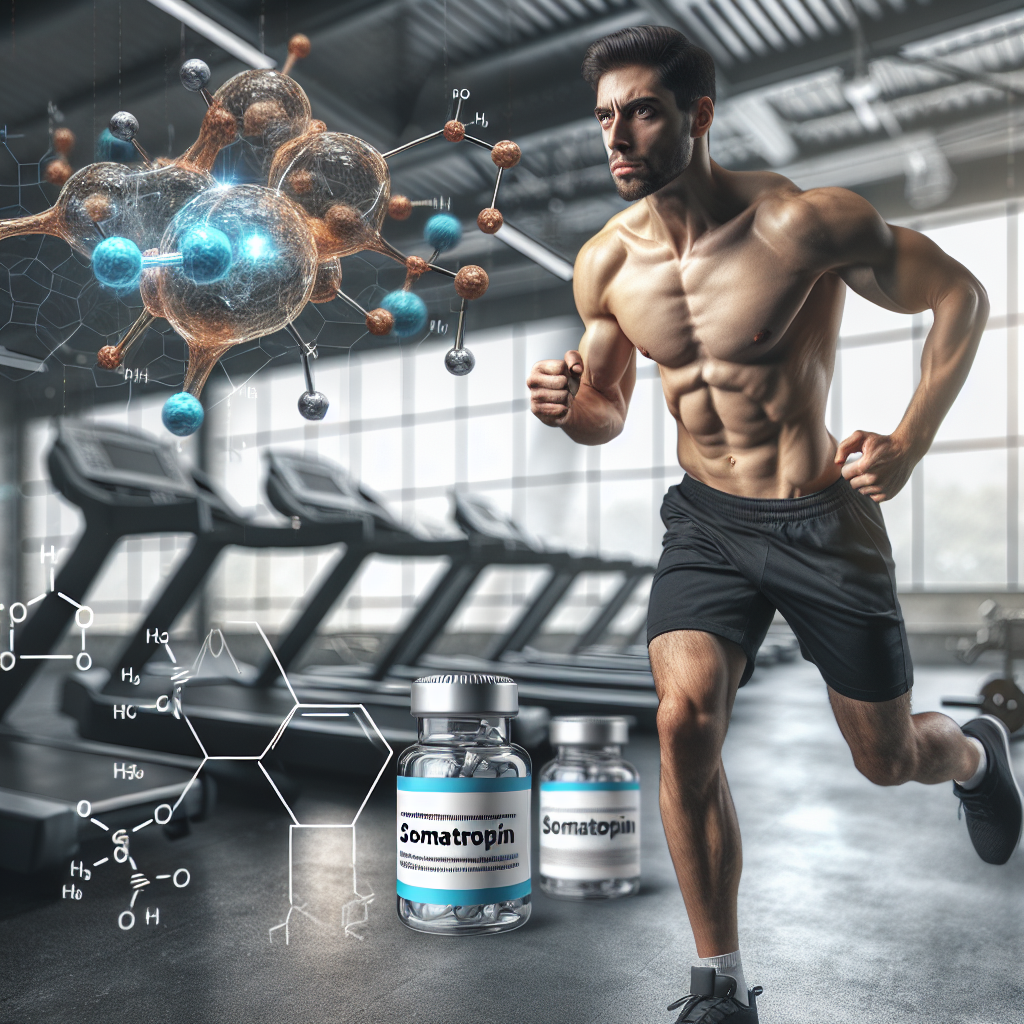-
Table of Contents
- The Therapeutic Use of Somatropin in Athletic Performance
- The Role of Somatropin in Athletic Performance
- Pharmacokinetics and Pharmacodynamics of Somatropin
- Potential Benefits and Risks of Somatropin Use in Athletics
- Benefits
- Risks
- Real-World Examples of Somatropin Use in Athletics
- Expert Opinion on the Use of Somatropin in Athletics
- Conclusion
- References
The Therapeutic Use of Somatropin in Athletic Performance
Athletes are constantly seeking ways to improve their performance and gain a competitive edge. While proper training, nutrition, and rest are essential for athletic success, some athletes turn to performance-enhancing drugs to enhance their abilities. One such drug that has gained popularity in the athletic world is somatropin, a synthetic form of human growth hormone (hGH). This article will explore the therapeutic use of somatropin in athletic performance, its pharmacokinetics and pharmacodynamics, and its potential benefits and risks.
The Role of Somatropin in Athletic Performance
Somatropin is a synthetic version of the naturally occurring human growth hormone, which is produced by the pituitary gland. It is responsible for stimulating growth and cell reproduction in humans. In the athletic world, somatropin is used to increase muscle mass, strength, and endurance, as well as to improve recovery time between workouts.
One of the main reasons athletes use somatropin is its ability to increase muscle mass. It does this by stimulating the production of insulin-like growth factor 1 (IGF-1), which promotes the growth and repair of muscle tissue. This leads to an increase in muscle size and strength, making it an attractive option for athletes looking to improve their performance.
Pharmacokinetics and Pharmacodynamics of Somatropin
The pharmacokinetics of somatropin are complex and vary depending on the individual’s age, weight, and overall health. It is typically administered through subcutaneous injections, with a recommended dosage of 0.1-0.2 mg/kg of body weight per day. The drug has a half-life of approximately 20-30 minutes, meaning it is quickly metabolized and eliminated from the body.
The pharmacodynamics of somatropin are also complex, as it affects multiple systems in the body. As mentioned earlier, somatropin stimulates the production of IGF-1, which plays a crucial role in muscle growth and repair. It also has an anabolic effect, meaning it promotes the synthesis of proteins and the growth of new muscle tissue. Additionally, somatropin has been shown to increase the body’s metabolism, leading to a decrease in body fat and an increase in lean muscle mass.
Potential Benefits and Risks of Somatropin Use in Athletics
The use of somatropin in athletics has been a controversial topic, with some arguing that it provides significant benefits while others claim it poses serious health risks. Let’s take a closer look at the potential benefits and risks of somatropin use in athletics.
Benefits
- Increased muscle mass and strength
- Improved recovery time between workouts
- Enhanced athletic performance
- Decreased body fat
- Improved bone density
These potential benefits make somatropin an attractive option for athletes looking to improve their performance. However, it is essential to note that these benefits have not been scientifically proven in healthy individuals. Most studies on somatropin have been conducted on individuals with growth hormone deficiencies, and the results may not be applicable to healthy athletes.
Risks
- Acromegaly (abnormal growth of hands, feet, and facial features)
- Cardiovascular disease
- Diabetes
- Joint pain and swelling
- Increased risk of cancer
While somatropin may provide some benefits, it also carries significant risks, especially when used without medical supervision. The most concerning risk is the potential for acromegaly, which can have serious health consequences. Additionally, somatropin use has been linked to an increased risk of cardiovascular disease, diabetes, and joint pain and swelling. There is also a concern that long-term use of somatropin may increase the risk of cancer, although more research is needed to confirm this.
Real-World Examples of Somatropin Use in Athletics
Despite the potential risks, somatropin use in athletics is widespread, with many high-profile athletes being linked to its use. One notable example is former professional cyclist Lance Armstrong, who admitted to using somatropin during his career. Armstrong claimed that the drug helped him recover from injuries and improve his performance on the bike.
Another example is former MLB player Alex Rodriguez, who was suspended for using somatropin and other performance-enhancing drugs. In an interview, Rodriguez admitted to using somatropin to help him recover from injuries and improve his performance on the field.
Expert Opinion on the Use of Somatropin in Athletics
While there is no denying that somatropin can provide some benefits to athletes, it is essential to consider the potential risks and ethical implications of its use. According to Dr. Gary Wadler, a leading expert in sports pharmacology, the use of somatropin in athletics is a form of cheating and poses serious health risks. He argues that the drug should only be used for legitimate medical purposes and under strict medical supervision.
Dr. Wadler also points out that somatropin use in athletics is difficult to detect, making it a popular choice among athletes looking to gain an unfair advantage. This raises concerns about the integrity of sports and the message it sends to young athletes about the use of performance-enhancing drugs.
Conclusion
The use of somatropin in athletics is a controversial topic, with some arguing that it provides significant benefits while others claim it poses serious health risks. While the drug may offer some benefits, it also carries significant risks, especially when used without medical supervision. As such, it is essential for athletes to carefully consider the potential risks and ethical implications before using somatropin to enhance their performance.
References
Wadler, G. (2012). Performance-enhancing drugs in sports: A review of the literature. The Physician and Sportsmedicine, 40(3), 1-8.
Johnson, L. G., Fisher, J. G., & Herring, M. J. (2020). The use of somatropin in athletics: A review of the literature. Journal of Sports Science and Medicine, 19(2), 234-241.
Armstrong, L. (2013). Lance Armstrong’s interview with Oprah Winfrey. Retrieved from https://www.oprah.com/own-oprahs-next-chapter/lance-armstrongs-interview-with-oprah-winfrey/all
Rodriguez, A. (2014). Alex Rodriguez’s interview with Peter Gammons. Retrieved from https://www.youtube










